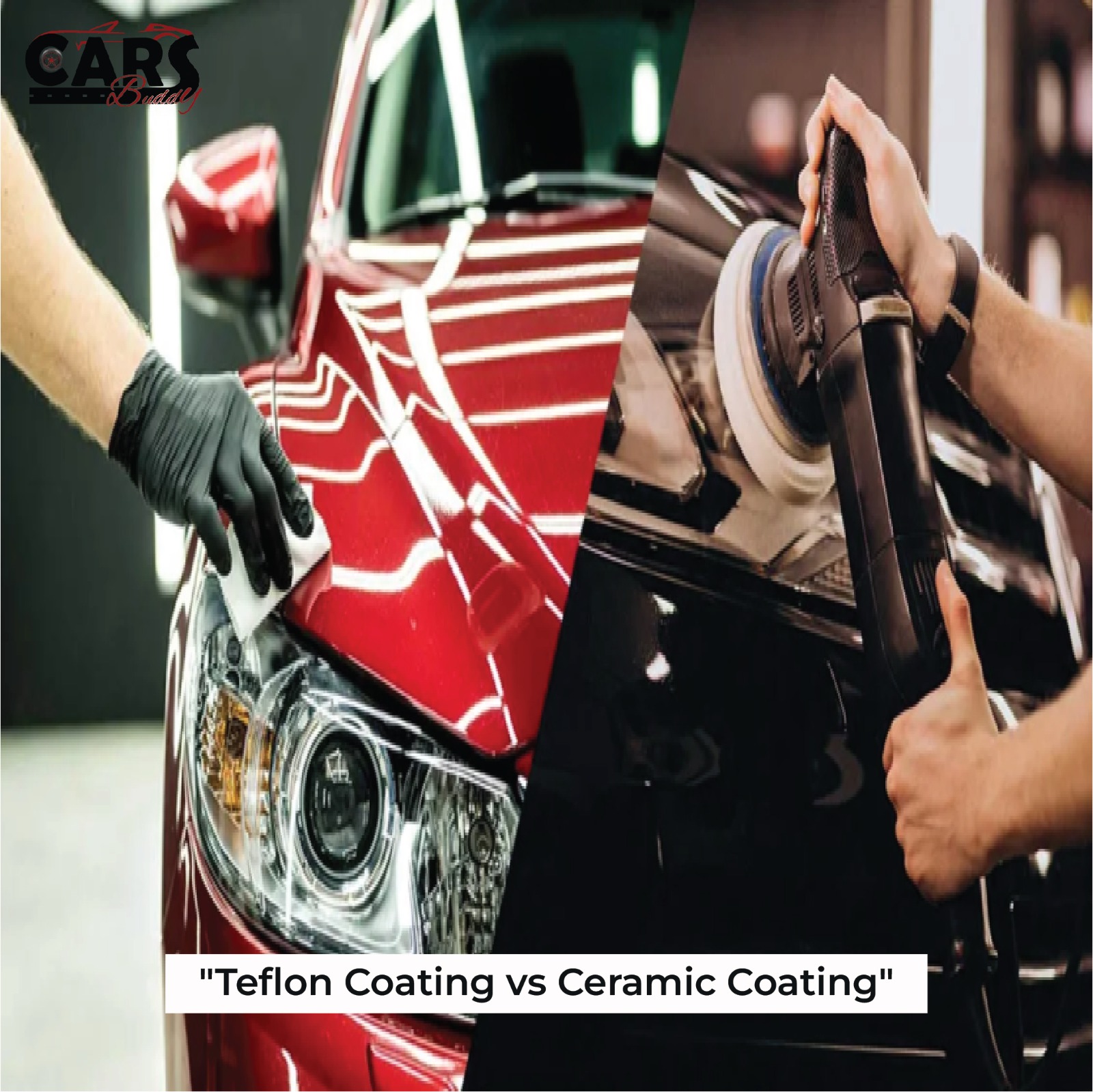
Teflon Coating vs Ceramic Coating
In the world of car detailing, protecting your prized possession’s paintwork is important. Two popular contenders vying for the top spot are Teflon coating and ceramic coating. While both offer a layer of protection, understanding their key differences will help you choose the right shield for your car.
Teflon Coating: A Legacy of Protection
Teflon, also known as Polytetrafluoroethylene (PTFE), has been a mainstay in car care for decades. Its primary benefit lies in its hydrophobic properties, meaning it repels water and dirt. This translates to easier cleaning and a temporary barrier against environmental elements like UV rays and minor scratches.
Advantages of Teflon Coating:
• Affordability: Teflon coating is significantly cheaper than ceramic coating.
• Ease of Application: Teflon coatings are often DIY-friendly and can be
applied at home with readily available products.
• Hydrophobic Properties: Teflon repels water, leading to easier washing and drying.
• Minor Scratch Resistance: It offers some degree of protection against light scratches and swirls.
Disadvantages of Teflon Coating:
• Durability: Teflon coatings typically last only a few months, requiring frequent reapplication.
• Limited Protection: It offers minimal protection against UV rays and harsh chemicals.
• Heat Sensitivity: Teflon can break down at high temperatures, potentially impacting its effectiveness.
Ceramic Coating: The Cutting-Edge Shield
Ceramic coating, a more recent innovation, utilizes a complex blend of silicon dioxide (SiO2) and other synthetic polymers to create a hardened, semi-permanent layer on your car’s paint. This coating offers superior protection compared to Teflon.
Advantages of Ceramic Coating:
• Superior Durability: Ceramic coatings can last for several years, often
exceeding 3-5 years with proper maintenance.
• Enhanced Protection: They provide excellent protection against UV rays, chemical contaminants, and minor scratches.
• Hydrophobic & Self-Cleaning Properties: Like Teflon, ceramic coatings repel water and dirt, but with added self-cleaning properties that make water bead up and roll off, taking dirt particles with it.
• Gloss Enhancement: Ceramic coatings can significantly enhance the car’s gloss and create a deeper, richer shine.
Disadvantages of Ceramic Coating:
• Cost: Ceramic coating is significantly more expensive than Teflon coating.
• Professional Application: Due to the complex application process, it’s often recommended to get a ceramic coating applied by a professional detailer.
• Maintenance: While requiring less frequent reapplication, maintaining a ceramic coat involves using specific car wash products to preserve its
effectiveness.
Choosing the Right Shield for Your Car
The ideal choice between Teflon and ceramic coating depends on your budget, desired level of protection, and dedication to car care.
For Budget-Conscious Car Owners:
• If affordability is a primary concern, and you’re comfortable with frequent reapplication, Teflon coating might be a suitable choice.
For Enthusiasts Seeking Long-Term Protection:
• For those who prioritise superior protection, durability, and a deep, glossy finish, ceramic coating is the clear winner. While the initial investment is higher, the long-term benefits outweigh the cost for many car enthusiasts.
Additional Considerations:
• Car Usage: For cars driven infrequently or stored indoors, Teflon coating might suffice. However, for daily drivers exposed to the elements, ceramic coating is a better long-term investment.
• DIY vs. Professional Application: While Teflon is often DIY-friendly, ceramic coating requires professional application to ensure proper bonding and maximum effectiveness.
Ultimately, both Teflon and ceramic coating offer valuable benefits for your car. By understanding their strengths and weaknesses, you can choose the shield that best protects your investment and keeps your car looking its absolute best.

